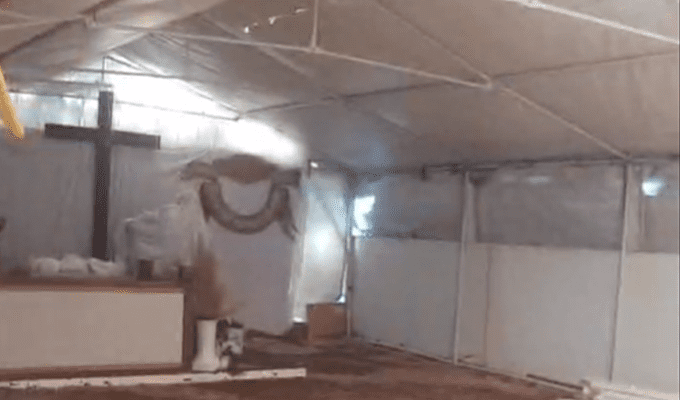A member of a Tongan church has claimed that the Auckland City Council had ordered the demolition of their makeshift church shelter in Auckland.

Formerly known as the Siasi Uēsiliana Tau‘atāina ‘o Tonga New Zealand (SUTTNZ) church, the denomination emerged as a breakaway faction from the Free Wesleyan Church New Zealand (FWCNZ) at Māngere’s Tuingapapai church in about a decade ago.
‘Akuila Hafoka, who claimed in a streamed video shared on Facebook on Monday that he was the church’s sētuata (steward), alleged a complaint launched against the church led to the Council’s decision.
The video showed what appeared to be the interior of a large tent placed as a cover on top of a timber-frame building.
Some parts of roof timbers can be seen lying on the ground inside the structure.
Hafoka said that all the dismantled items would be discarded in the garbage.
He alleged that the Council compliance officers told them that although this was not a permanent structure, it appeared it violated building codes and could become a fire hazard if heating was used inside or the electrical wiring had been unsafe.
Hafoka claimed that the Council was informed of their temporary church shelter by an informant from within the church community.
The church
The former SUTTNZ church was registered around 2013 after three church members and their followers broke away from the Free Wesleyan Church of Tuingapapai in Mangere, Auckland.

The name SUTT was originally the Tongan name for the Free Wesleyan Church of Tonga in Tonga, or Siasi Uēsiliana Tau’atāina ‘o Tonga.
However, it has been claimed that the SUTT name was not registered in New Zealand. Tongan lawyer Nalesoni Tupou reportedly said he registered it and gave it to a Tongan church minister.
The breakaway group used it to register their church.
The FWCNZ initiated legal action against the SUTTNZ, which was later appealed by the SUTTNZ.
As reported by Kaniva News recently, the High Court of New Zealand dismissed the appeal and ordered the name returned to the FWCNZ.
The court found that the appellant’s trademark registration would likely cause confusion and lacked prior ownership or use.







